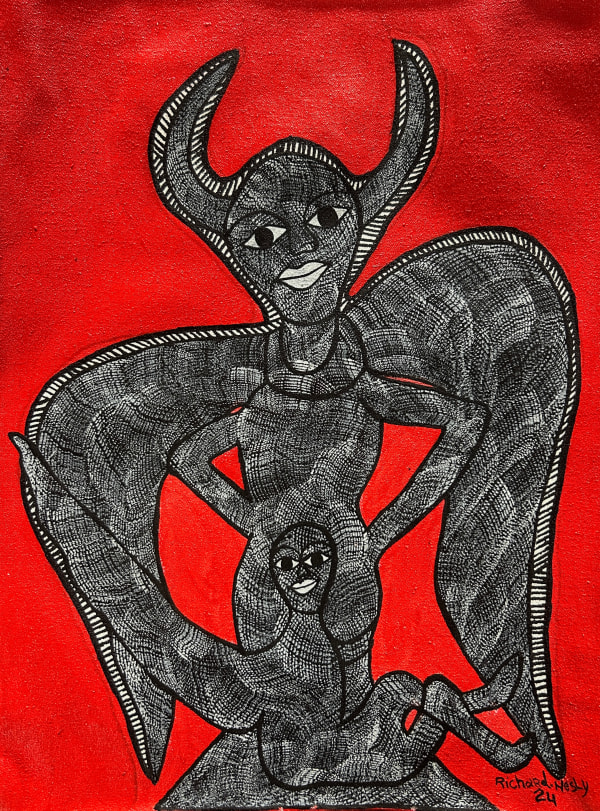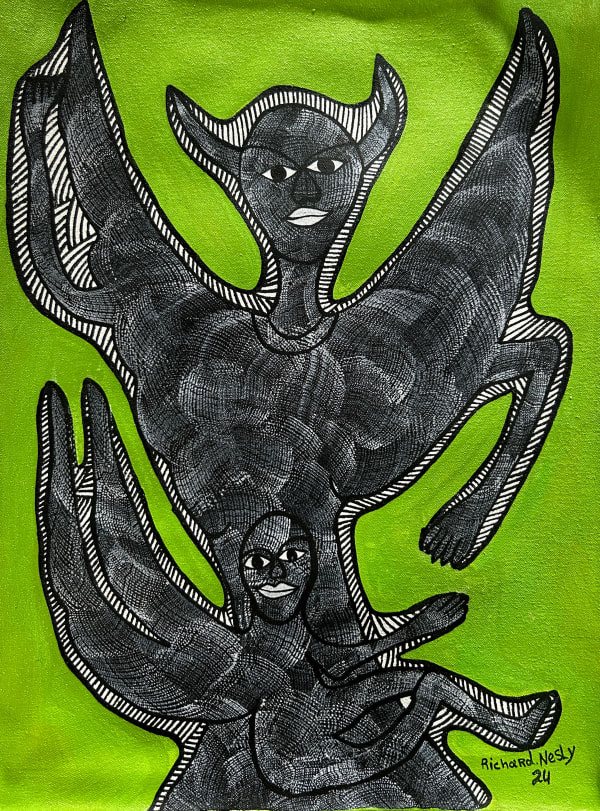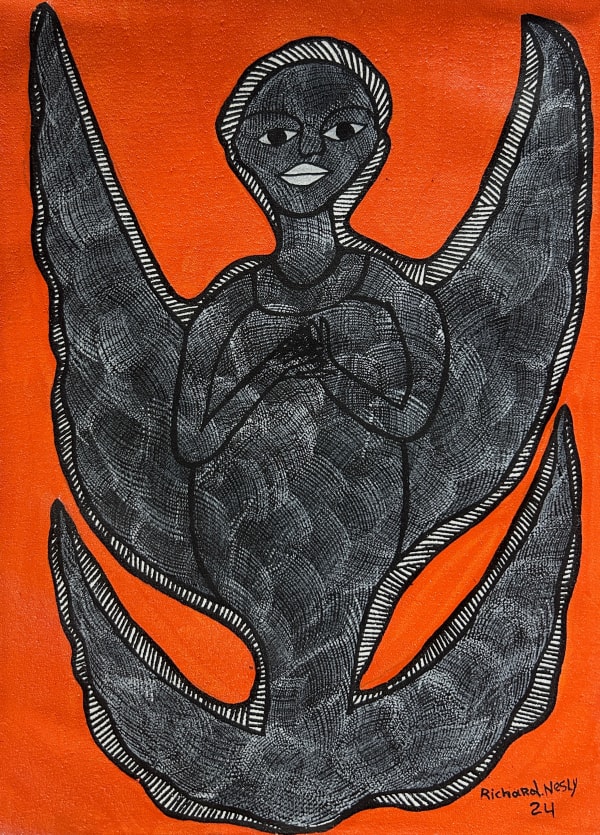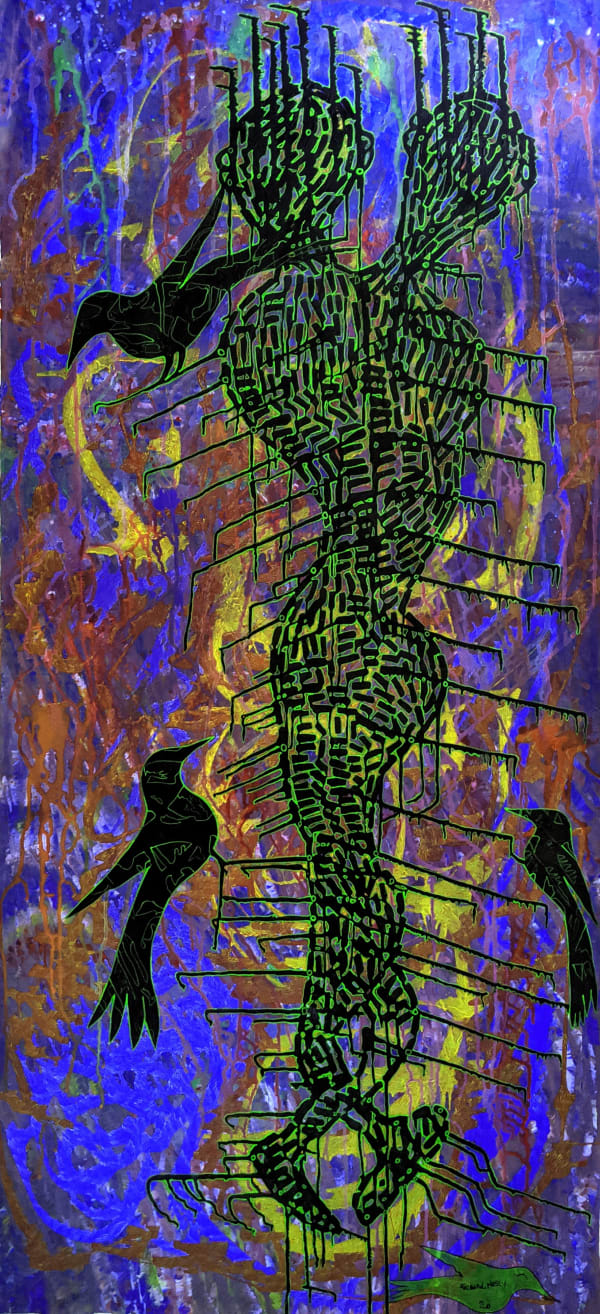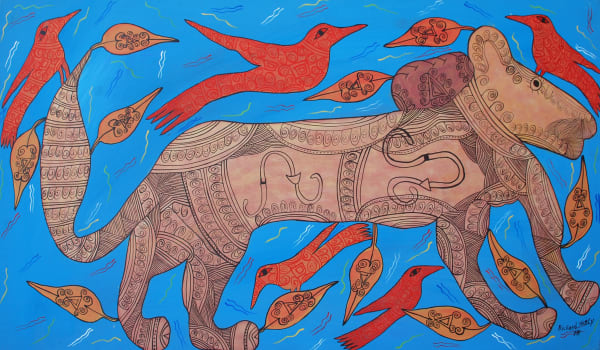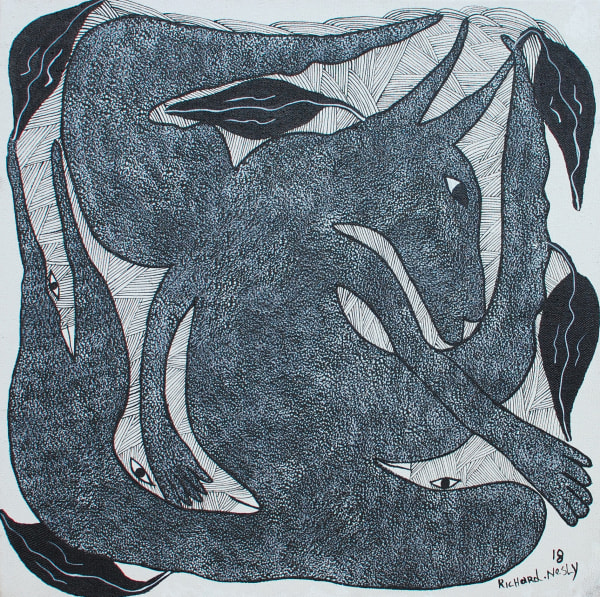Richard NESLY
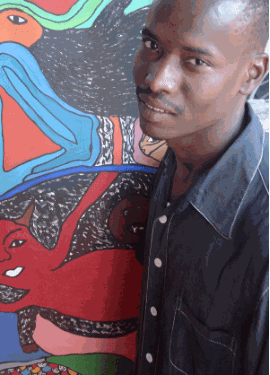
Starting today, you are the master of the house,” Richard Antihomme said to his adolescent son, Richard Nesly, who at the age of 18, painted his first work. Nesly was born in Port au Prince, but bred in Petit Trou de Nippes, described as one of the most beautiful cities in Haiti. The Grand Riviere sometime strands ‘Ti Trou’ from the rest of the island and floods the roads, cities, markets, and even homes making everyday life death defying. The Grand Riviere, the lifeblood of the community and of many Saint Soleil artists, with its tributaries feeding banana fields and millet plantations with nutrients and its fish-filled tributaries that reach out to the sea.
The Ibo of Nigeria say, “he who stands tall, stands on the shoulders of his forefathers.” If Nesly’s father named him master of the house, he was able to stand tall because of those who came before him who birthed the San Soleil style: ,xxx,xxx,xxx, and Louisiane Saint Fleurant among others. His style builds on the elders of San Soleil. Since those early days of being molded like river rocks and peeking over the shoulders of other master painters, painters who forged the way without training and through risk or estrangement, Nesly has found a style of his own. His style is the gentle melding of blues and browns on canvas, like human mudslides flowing from the green hills to the sea. His style is bold and colorful like bright suns plunging into purple waters. His style is whimsical like brown cow tails swatting away flies. His style also invokes an emotional and spiritual response as we stop to consider these lanky and lulling spirit beings.
The nativity of Jesus is celebrated in Ti Trou “Fet Nativite”. The Nativity, the birth of Jesus and the second coming of Adam, is remembered every year in Nesly’s hometown. But who are these Trounippois really celebrating? Certainly, there are the devout among them who follow the letter and law of the scripture. But how about the artist? When we consider the work of San Soleil and Nesly’s work, we must wonder who or what is being celebrated on canvas and board. Have artists like Nesly created their own Pantokrator- multi-colored and wild? In the world of Nesly and San Soleil, we are visually led to believe these are incarnations representing power and authority over the rivers, fields, and natural places. We are visually led to believe that these beings truly have dominion in this small corner of the world. Nesly’s brush and stroke leads us on a walk on the wild side where form does not follow function; form follows imagination that is only bound by the two-dimensional canvas. Nesly continues to push at the edges of our world and continues to search for definition of the unknown.
We are pleased to be able to offer a showing of Nesly’s most recent works that offer a fresh look at Haiti’s own iconography.

